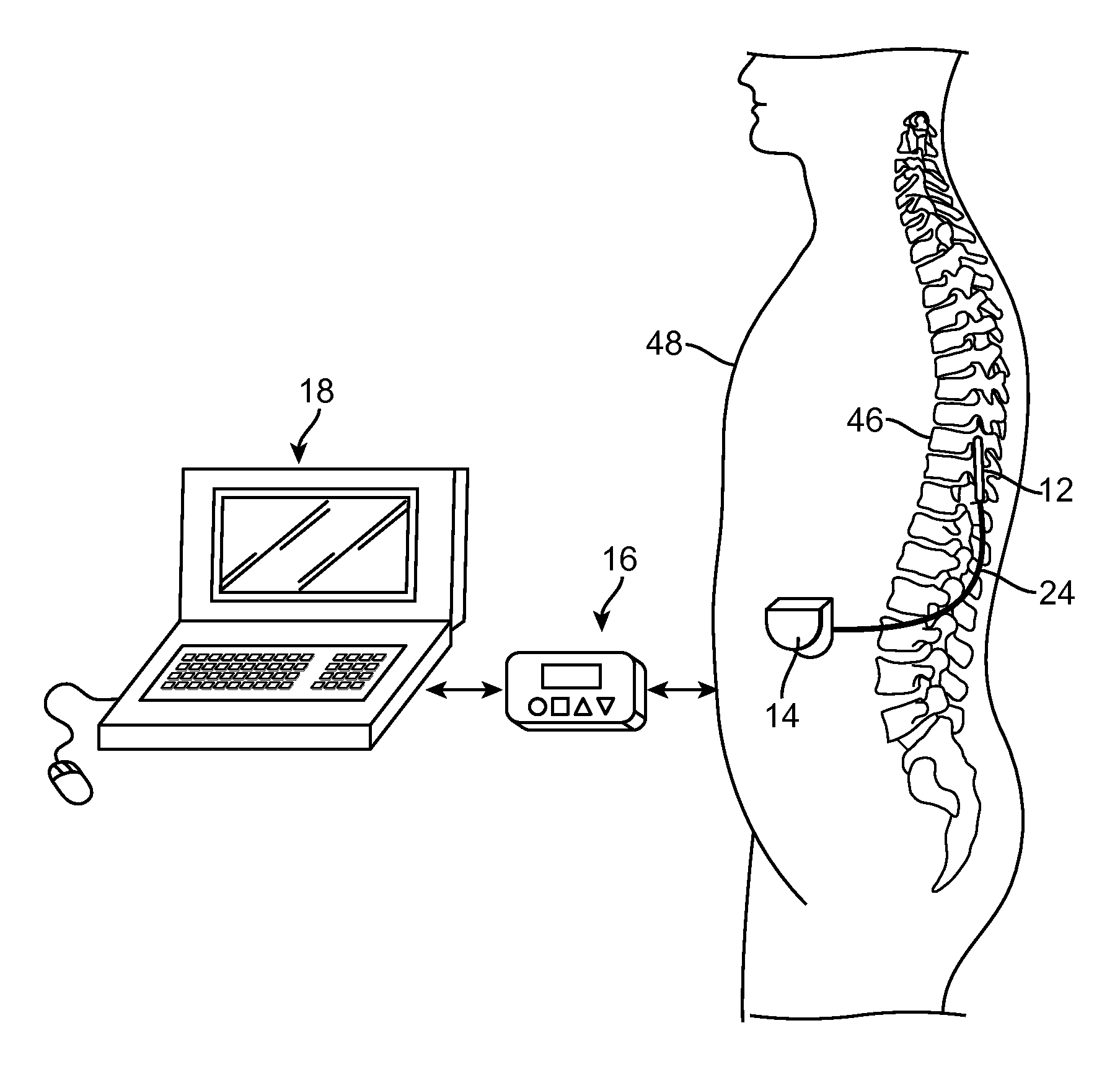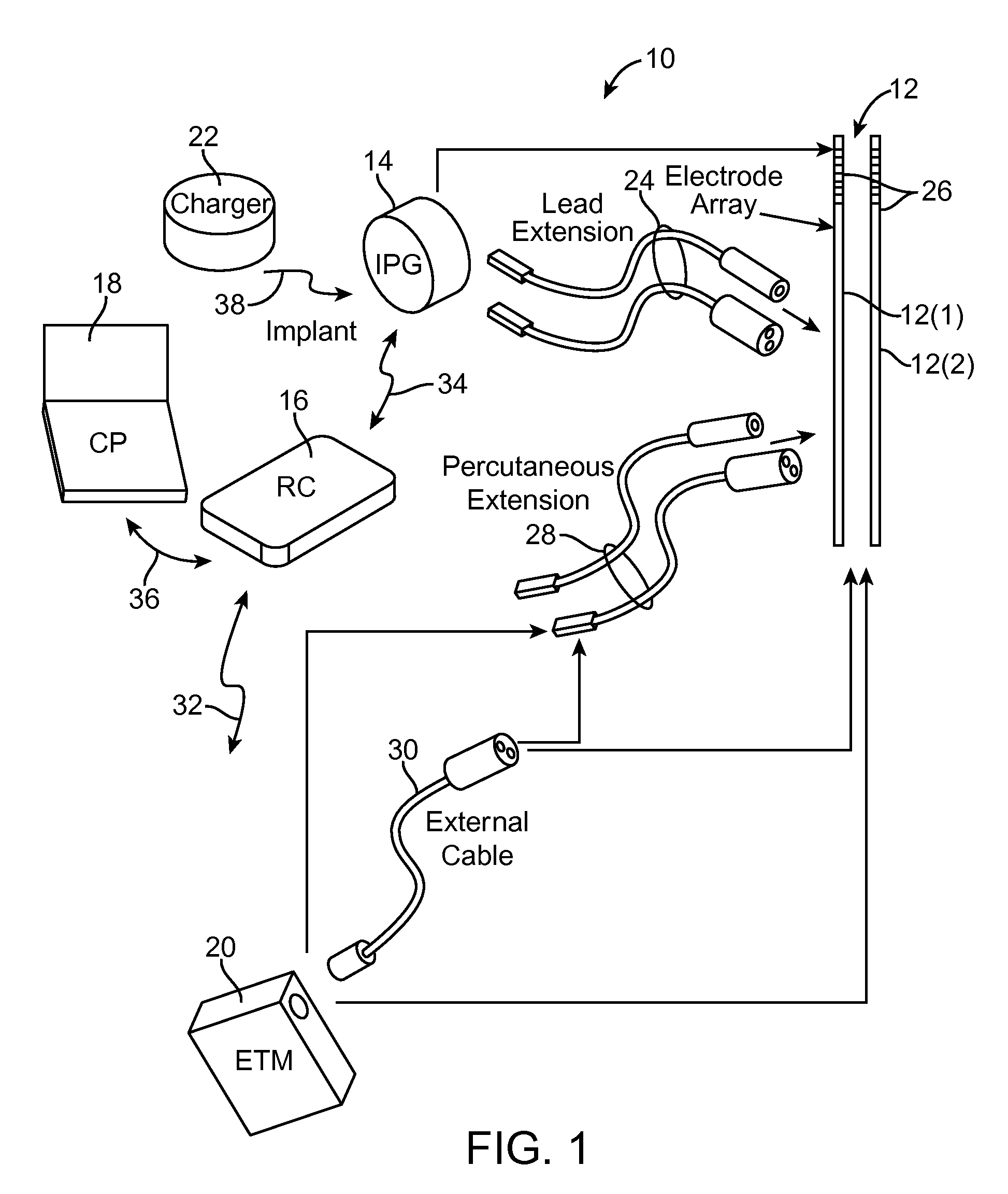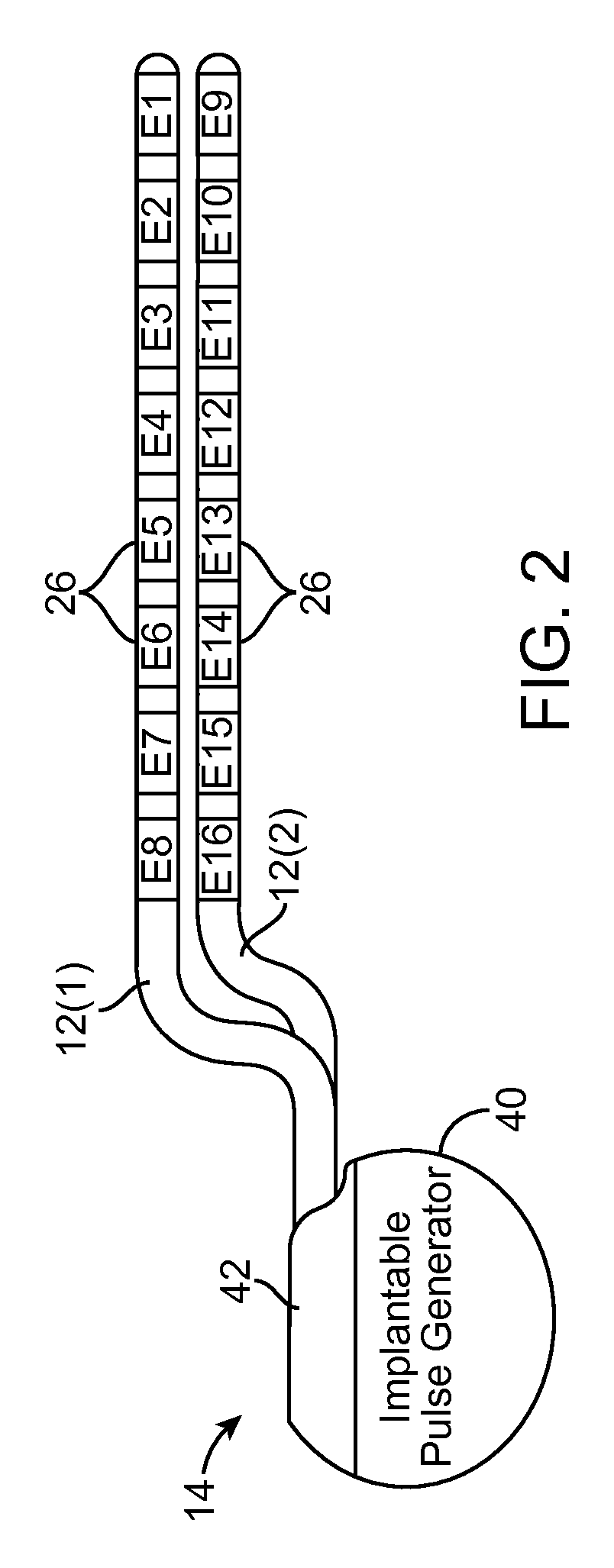Neuromodulation system and method for reducing energy requirements using feedback
a neuromodulation and feedback technology, applied in the field of tissue modulation systems, can solve the problems of requiring daily or more frequent recharge, requiring relatively high energy requirements to achieve high-frequency modulation in contrast to low-to-mid-frequency modulation, and so as to achieve the effect of reducing the energy consumption of neuromodulation devices
- Summary
- Abstract
- Description
- Claims
- Application Information
AI Technical Summary
Benefits of technology
Problems solved by technology
Method used
Image
Examples
Embodiment Construction
[0031]The description that follows relates to a spinal column modulation (SCM) system. However, it is to be understood that the while the invention lends itself well to applications in SCM, the invention, in its broadest aspects, may not be so limited. Rather, the invention may be used with any type of implantable electrical circuitry used to modulate tissue. For example, the present invention may be used as part of a pacemaker, a defibrillator, a cochlear modulator device, a retinal modulator device, a modulator device configured to produce coordinated limb movement, a cortical modulator device, a deep brain modulator device, peripheral nerve modulator device, micromodulator device, or in any other tissue modulator device configured to treat urinary incontinence, sleep apnea, shoulder sublaxation, headache, etc.
[0032]Turning first to FIG. 1, an exemplary SCM system 10 generally includes one or more (in this case, two) implantable modulation leads 12(1) and 12(2), a fully implantabl...
PUM
 Login to View More
Login to View More Abstract
Description
Claims
Application Information
 Login to View More
Login to View More - R&D
- Intellectual Property
- Life Sciences
- Materials
- Tech Scout
- Unparalleled Data Quality
- Higher Quality Content
- 60% Fewer Hallucinations
Browse by: Latest US Patents, China's latest patents, Technical Efficacy Thesaurus, Application Domain, Technology Topic, Popular Technical Reports.
© 2025 PatSnap. All rights reserved.Legal|Privacy policy|Modern Slavery Act Transparency Statement|Sitemap|About US| Contact US: help@patsnap.com



